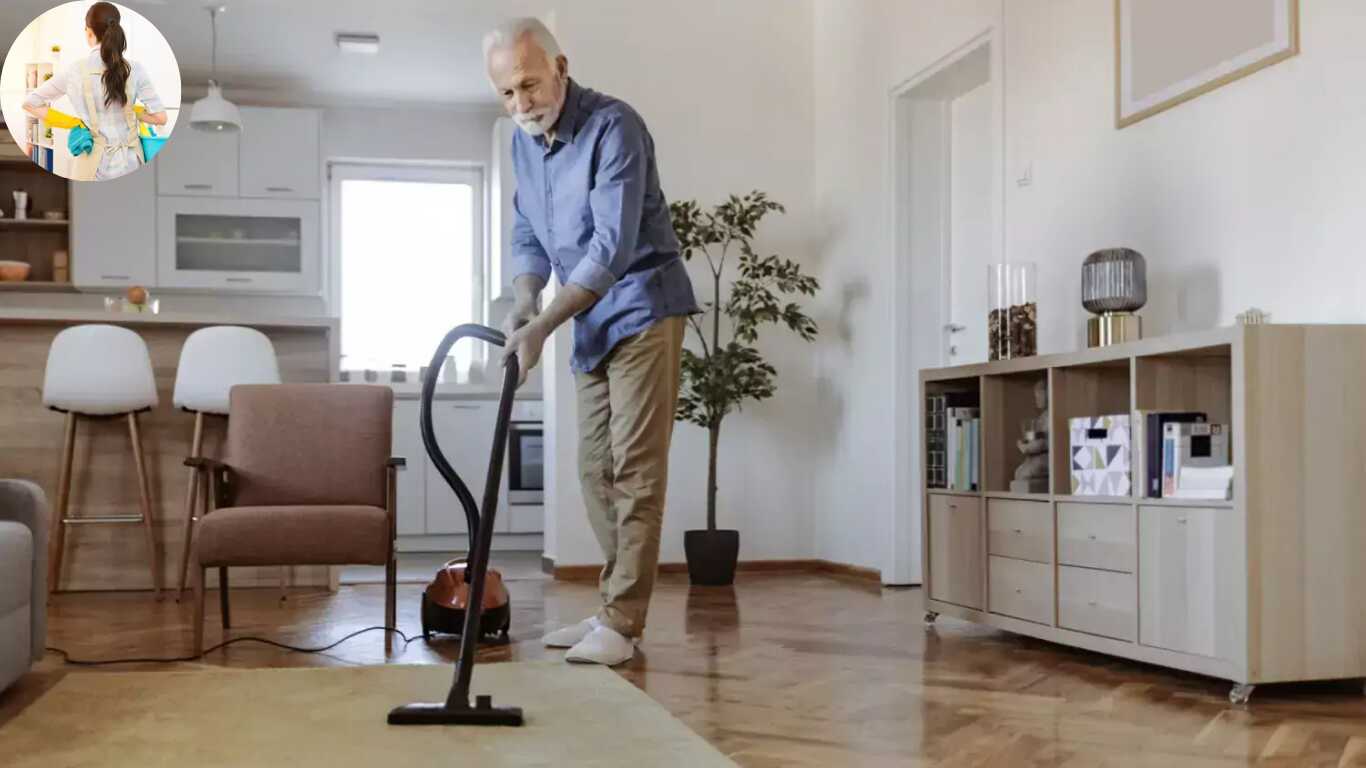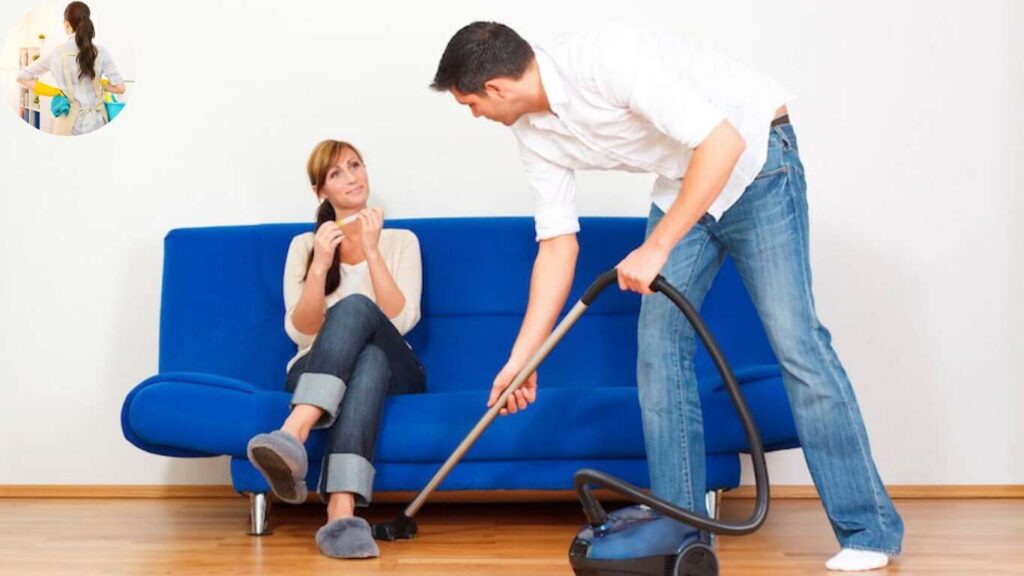Many ask, “Does house cleaning count as exercise?” It’s a valid question—after all, house chores involve physical Movement, exertion, and sometimes even breaking a sweat. But can mopping floors or vacuuming be as effective as hitting the gym or jogging?
| Aspect | Details |
|---|---|
| Classification | Typically categorized as NEAT (Non-Exercise Activity Thermogenesis) |
| Calorie Burn | ~150-200 calories per 30 minutes (varies by intensity/body weight) |
| Intensity Requirement | Must involve sustained movement and elevated heart rate to qualify as exercise |
| Health Benefits | Reduces sedentary risks, improves mobility, and supports calorie deficit |
| Limitations | Doesn’t fully replace structured exercise for cardiovascular/strength gains |
| Activity Tracking | Often excluded from dedicated exercise logs unless involving heavy tasks (e.g., moving furniture) |
Understanding Exercise: What Counts and Why?
To determine if house cleaning qualifies as exercise, we must first understand what exercise means regarding health and fitness.
What Is Exercise?
Exercise is any physical activity that raises your heart rate, engages your muscles, and requires energy. It is often categorized into two main types:
- Structured Exercise: Planned activities like gym workouts, running, swimming, or yoga. These are intentional and often follow a routine.
- Incidental Activity: Unplanned physical activities you do as part of everyday life, such as walking to the store, gardening, or cleaning.
While structured exercise is typically considered the “gold standard” for fitness, incidental activities can contribute to overall physical activity levels.
Official Guidelines for Physical Activity
Health organizations, like the World Health Organization (WHO) and the CDC, recommend at least 150 minutes of moderate-intensity or 75 minutes of vigorous activity per week. Moderate activities include brisk walking or heavy cleaning, while vigorous activities include running or aerobics.
This means that certain house cleaning tasks could be guidelines if done with enough intensity. Let’s explore further.
The Physical Demands of House Cleaning
House cleaning isn’t just about making your home look tidy—it’s a surprisingly physical activity that involves a range of movements and muscle engagement.
You may also read(are brown house spiders poisonous)
Common House Cleaning Tasks
Here are some common cleaning tasks that require physical effort:
- Vacuuming: Involves walking, pushing, and pulling motions.
- Mopping: Requires repetitive arm and shoulder movements.
- Scrubbing Surfaces: Engages your arms, shoulders, and core.
- Dusting: Involves reaching, bending, and stretching.
- Carrying Laundry or Trash Bags: Works your legs, back, and arms.
Muscle Groups Engaged
Many cleaning tasks involve functional movements that engage multiple muscle groups:
- Lower Body: Bending, squatting, and walking activate your legs and glutes.
- Upper Body: Lifting and scrubbing, using your arms, shoulders, and back muscles.
- Core: Balancing and twisting during activities like mopping or vacuuming engage your core muscles.
Intensity and Duration
The intensity of house cleaning can vary. For example, light dusting may not raise your heart rate significantly, but scrubbing floors vigorously or vacuuming an entire house could. The duration of your cleaning session also plays a role: cleaning for 30–60 minutes can burn a decent amount of calories, as we’ll see next.
Calories Burned: How Does House Cleaning Stack Up?
One of the easiest ways to measure the physical exertion of an activity is by looking at how many calories it burns. Let’s see how house cleaning measures up.
Calories Burned During Cleaning Activities
Here’s an estimate of how many calories you can burn doing common chores for 30 minutes (based on a person weighing 155 lbs):
- Vacuuming: ~90 calories
- Mopping: ~110 calories
- Scrubbing Surfaces: ~120 calories
- Dusting: ~70 calories
- Washing Windows: ~125 calories
If you spend an hour cleaning, you could burn anywhere from 150 to 300 calories, depending on the intensity and the tasks performed.
Comparison to Other Exercises
How does house cleaning compare to traditional exercises?
- Walking (3.5 mph): ~150 calories/hour
- Cycling (light effort): ~250 calories/hour
- Jogging (5 mph): ~480 calories/hour
While house cleaning burns fewer calories than high-intensity workouts, it can still be a meaningful way to stay active, especially for those who don’t have time for the gym.
Does House Cleaning Count as Exercise?
Now that we understand the physical demands and calorie burn of house cleaning, let’s evaluate whether it qualifies as exercise.
Does It Meet the Criteria?
For physical activity to count as moderate-intensity exercise, it should:
- Raise Your Heart Rate: Cleaning tasks like mopping or scrubbing can elevate your heart rate, especially if done vigorously.
- Engage Major Muscle Groups: Many cleaning tasks involve full-body movements.
- Be Done Consistently: To reap health benefits, you must clean regularly and for a sufficient duration (e.g., 30 minutes per session).
The Role of Intensity
The key factor is intensity. Light dusting or folding laundry likely won’t count as exercise, but more strenuous activities like vacuuming, carrying heavy loads, or washing windows might.
Health Benefits of House Cleaning Beyond Exercise
While house cleaning may not replace a gym workout, it offers several health benefits, both physical and mental.
Mental Health Benefits
- Stress Relief: Cleaning can be meditative and reduce stress.
- Improved Mood: A tidy environment boosts mood and a sense of accomplishment.
- Focus and Clarity: A clean space can improve concentration and productivity.
Physical Health Benefits
- Flexibility and Strength: Tasks like bending, stretching, and lifting improve flexibility and muscle tone.
- Endurance: Cleaning for an hour can build stamina over time.
- Improved Sleep: Daily physical activity, like cleaning, can promote better sleep quality.
House Cleaning vs. Traditional Exercise: A Comparison
Let’s compare house cleaning and traditional exercises in a quick table:
AspectHouse CleaningTraditional Exercise
Structure Unstructured Structured
Intensity Varies (low to moderate) Can be moderate to high
Muscle Groups Used Full body, functional movements Targeted or full-body
Calories Burned 150–300/hr (varies by activity) 200–600/hr (activity-dependent)
Mental Health Impact Stress relief, mood boost Endorphin release, mood boost
Social Aspect Usually solo Can be group or solo
How to Maximize the Exercise Benefits of House Cleaning
If you want to make house cleaning a more effective workout, try these tips:
- Increase Intensity: Move faster, take fewer breaks, or add extra movements like lunges or squats while cleaning.
- Use Music: Play energetic songs to keep yourself motivated and moving.
- Take Advantage of Stairs: Carry items up and down stairs to increase your heart rate.
- Add Weights: Wear ankle weights or carry heavier objects to build strength.
Sample Cleaning Workout
- 10 minutes: Vacuuming the living room (focus on quick, strong movements).
- 10 minutes: Scrubbing the bathroom (engage your core while reaching and scrubbing).
- 10 minutes: Carrying laundry up and down stairs.
Limitations: When House Cleaning Isn’t Enough
While house cleaning has benefits, it’s not a perfect substitute for traditional exercise.
Why It May Fall Short
- Lack of Cardiovascular Challenge: Cleaning may not elevate your heart rate as much as running or cycling.
- Muscle Imbalance: It doesn’t target specific muscle groups like strength training.
- Inconsistent Intensity: The effort varies depending on the task.
Supplement with Other Activities
For balanced fitness, combine house cleaning with other forms of exercise, like walking, strength training, or yoga.
Expert Opinions and Research Findings
Many health experts agree that incidental activities like cleaning can contribute to overall fitness, but they caution against relying on them exclusively.
- A fitness coach might say: “House cleaning is a great way to stay active, but it’s not a replacement for structured exercise.”
- Research shows that combining housework with other activities leads to better health outcomes.
Practical Takeaways: Making House Cleaning Work for Your Health
- Track Your Activity: Use a fitness tracker to monitor steps and calories burned while cleaning.
- Set Realistic Goals: Aim to incorporate cleaning into your weekly fitness routine.
- Every Movement Counts: Even small activities add up, so stay active throughout the day.
Frequently Asked Questions (FAQs)
Does house cleaning count as exercise for weight loss?
Yes, but it depends on the intensity and duration. Vigorous cleaning can contribute to a calorie deficit.
Can house cleaning replace going to the gym?
Not entirely. It’s a great supplement but lacks cardiovascular and strength-building aspects of gym workouts.
Conclusion
Many ask, “Does house cleaning count as exercise?” It’s a valid question—after all, house chores involve physical Movement, exertion, and sometimes even breaking a sweat. But can mopping floors or vacuuming be as effective as hitting the gym or jogging?
You may also read(are centipedes good for your house)
